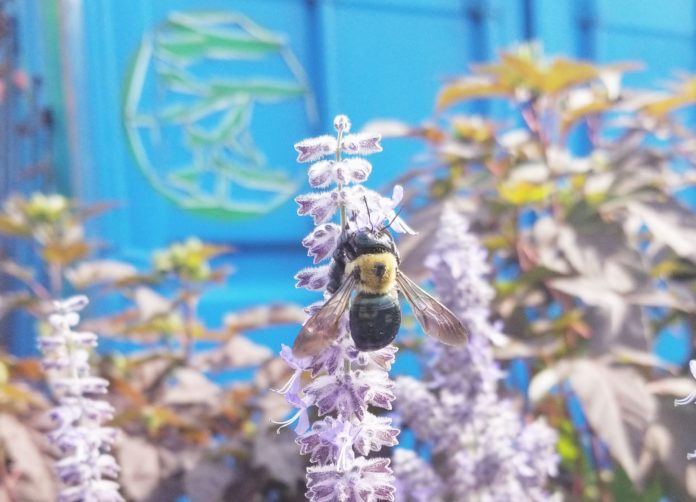Cities around the world are growing, and with this growth comes increasing environmental concerns. But traditional methods of monitoring the effects of this rapid urbanization — air sampling, for example — are costly and time-consuming, and alternate solutions are needed to assess the environmental impacts of our growing urban centres.
To address this issue, a team of researchers from the University of British Columbia’s Department of Earth, Ocean, and Atmospheric Sciences decided to ask for help from a unique group of urban dwellers: the honeybees that call these cities home.
The study was led by Kate Smith, a PhD student in the Department of Earth, Ocean, and Atmospheric Sciences, and was published in Nature Sustainability.
When honeybees collect pollen from flowers, they inadvertently pick up traces of other dust and particles along the way. These particles, which include elements like zinc and lead, later get incorporated into the honey produced in the hive.
Fortunately, the amount of these trace elements in a typical jar of honey is small — far too low to pose any sort of health risk, according to the authors.
But even in low quantities, these trace elements can be detected and measured. And since honeybees typically forage in the few kilometres surrounding their hives, measurements of the elements in a particular hive’s honey can shed light on the chemical makeup of the local environment around the hive, including any pollutants that may be present in the area.
This means that rather than having to take samples from many different places in a several-kilometre radius, researchers can look to a single sample of honey for a snapshot of the entire surrounding area.
Smith’s study focused on honey that had been collected from six unique geographical sectors in Vancouvera. The chosen sectors represented four different zoning districts: urban, industrial, residential, and agricultural. By comparing the compositions of each honey sample, the authors hoped to pinpoint elements that could be linked to increasing urbanization, industrialization, and pollution.
They found that the honey samples collected from urban regions contained elevated levels of metals compared to those collected from residential or agricultural areas. For example, antimony — an element used in the brake pads of cars — was more prevalent in honey collected from downtown Vancouver than in suburban and rural honey. Honey collected from areas near shipping ports, on the other hand, showed enhanced levels of vanadium, which is an element found in the heavy fuel oils burned by cargo ships.
Going forward, the authors are interested in tracking changes in the honey collected from different areas over time.
“We now have four years of consistent data from Metro Vancouver, which provides a present-day baseline that will allow us to monitor even tiny changes in our environment very efficiently,” said co-author Dominique Weis, professor at the University of British Columbia.
The authors also pointed out the practicality of their method in regions that may not have access to traditional environmental monitoring programs.
“[The method] bridges science with community interests,” said Smith. “Honey sampling can easily be performed by citizen scientists in other urban centres, even if they lack other environmental monitoring capabilities.”








































